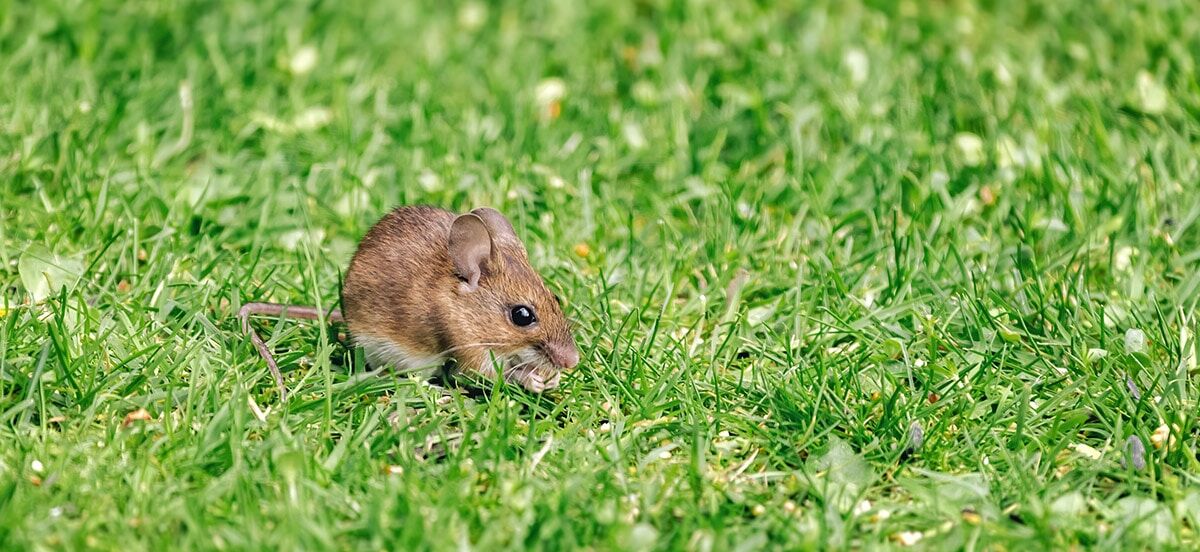
Not usually a huge problem for UK lawns, mice and voles can cause their share of issues in a garden. Despite their meagre stature, they occasionally cause problems by burrowing or tunneling in lawns or grass banks. Given that they remain active year-round and have a particularly long breeding season from Spring through to autumn, there can be population bursts every few years that result in more noticeable damage in the garden.
What are the signs of mouse and vole activity?
Both rodents may leave signs of their snacking; if you find bitten off fruit left in heaps or if stems of plants have a pair of grooves running down it, you may have a vole or mouse visitor. Both are known to dig up bulbs and root vegetables often fall victim to voles. They may also nibble on the lawn, though these areas will likely grow back and thicken up just fine.
Seeds are also a favourite snack and you may find your newly filled seed trays raided.
Whereas mice nibbling at your plants is annoying, voles can cause more significant lawn problems. They can leave two-inch holes in the lawn and will also tunnel near the surface, resulting in the lawn getting soft and unsteady in some areas. It is also not unheard of for them to take over existing mole tunnels and cause all sorts of damage to the lawn.
All that digging requires a significant amount of energy, meaning a vole often devours enough food to equal their body weight per day, not ideal if it has chosen your garden to satiate itself.
How can I protect my garden and deter mice and voles?
- Ensure your greenhouse is secure, as mice can often take refuge in Winter and lay siege to the contents. A strong concrete floor and wire mesh in vulnerable spots should keep your plants protected.
- Repair or seal up any small gaps in sheds (checking first that no creatures have already hidden away inside).
- Protect seedlings and bulbs with fine mesh wire netting.
- Cut back any overgrown areas and keep grass at a shorter height to deprive them of the cover they like to hide away in. Likewise, regularly clear lawn debris such as leaves and piles of twigs.
- Wrap new trees with trunk protectors. You can get reusable plastic tree guards or take a DIY approach and wrap the trunk in chicken wire.
Unfortunately, given their rapid reproduction rates it can be difficult to effectively control these rodents, and many of the methods that are available such as chemical control or baits can be harmful and potentially dangerous to surrounding wildlife. Some people have reported success with traditional mouse traps (with peanut butter said to be particularly enticing), but unless they are causing any serious issues we say live and let live!
How can I repair my lawn?
Voles tend to feed on the blades and shoots of the grass rather than damaging the roots, so though the lawn may have a patchy, shorn appearance in some areas, these often fill in well given time. You can give it a hand by putting some additional seed down, but if so, cover with wire mesh to avoid the vole returning and pinching the seed!
It is generally the tunnelling on the surface of the lawn that is more problematic. You may be able to rectify it by taking the steps below. However, depending on the extent of the damage in extreme circumstances a new lawn or lawn renovation may be required.
How to repair your lawn from Vole or mice damage?
- Identify holes and tunnels where the lawn surface may have collapsed
- Top up and firm in topsoil to the low areas, raking to create a smooth tilth
- Sow grass seed @ 35 grams per square metre
- Apply slow-release organic fertiliser @ 35 grams per square metre.
- Alternatively patch in damaged areas with lawn turf.

